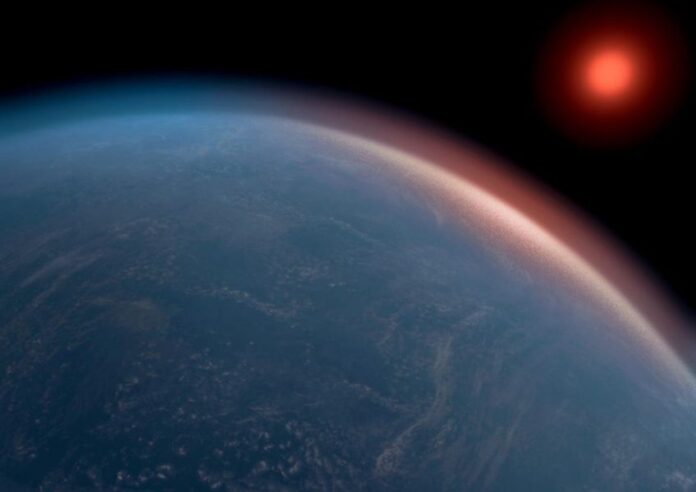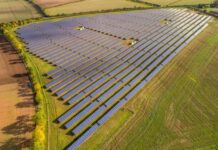Astronomers have detected the most promising signs yet of a possible biosignature outside the solar system although they remain cautious
Using data from the James Webb Space Telescope (JWST), the astronomers, led by the University of Cambridge, have detected the chemical fingerprints of dimethyl sulfide (DMS) and/or dimethyl disulfide (DMDS), in the atmosphere of the exoplanet K2-18b, which orbits its star in the habitable zone 124 light years away.
K2-18b — which is 8.6 times as massive and 2.6 times as large as Earth, and lies 124 light years away in the constellation of Leo — identified methane and carbon dioxide in its atmosphere. This was the first time that carbon-based molecules were discovered in the atmosphere of an exoplanet in the habitable zone. Those results were consistent with predictions for a ‘Hycean’ planet: a habitable ocean-covered world underneath a hydrogen-rich atmosphere.
However, another, weaker signal hinted at the possibility of something else happening on K2-18b. “We didn’t know for sure whether the signal we saw last time was due to DMS, but just the hint of it was exciting enough for us to have another look with JWST using a different instrument,” said Professor Nikku Madhusudhan from Cambridge’s Institute of Astronomy, who led the research.
To determine the chemical composition of the atmospheres of faraway planets, astronomers analyse the light from its parent star as the planet transits, or passes in front of the star as seen from the Earth. As K2-18b transits, JWST can detect a drop in stellar brightness, and a tiny fraction of starlight passes through the planet’s atmosphere before reaching Earth. The absorption of some of the starlight in the planet’s atmosphere leaves imprints in the stellar spectrum that astronomers can piece together to determine the constituent gases of the exoplanet’s atmosphere.
DMS and DMDS are molecules from the same chemical family, and both are predicted to be biosignatures. Both molecules have overlapping spectral features in the observed wavelength range, although further observations will help differentiate between the two molecules.
However, the concentrations of DMS and DMDS in K2-18b’s atmosphere are very different than on Earth, where they are generally below one part per billion by volume. On K2-18b, they are estimated to be thousands of times stronger – over ten parts per million.
“Earlier theoretical work had predicted that high levels of sulfur-based gases like DMS and DMDS are possible on Hycean worlds,” said Madhusudhan. “And now we’ve observed it, in line with what was predicted. Given everything we know about this planet, a Hycean world with an ocean that is teeming with life is the scenario that best fits the data we have.”
Madhusudhan says that while the results are exciting, it’s vital to obtain more data before claiming that life has been found on another world. He says that while he is cautiously optimistic, there could be previously unknown chemical processes at work on K2-18b that may account for the observations. Working with colleagues, he is hoping to conduct further theoretical and experimental work to determine whether DMS and DMDS can be produced non-biologically at the level currently inferred.
“The inference of these biosignature molecules poses profound questions concerning the processes that might be producing them” said co-author Subhajit Sarkar of Cardiff University.
“Our work is the starting point for all the investigations that are now needed to confirm and understand the implications of these exciting findings,” said co-author Savvas Constantinou, also from Cambridge’s Institute of Astronomy.
“It’s important that we’re deeply sceptical of our own results, because it’s only by testing and testing again that we will be able to reach the point where we’re confident in them,” Madhusudhan said. “That’s how science has to work.”







